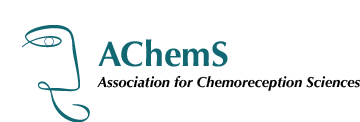- Home
- Symposia
2024 Symposia
Keynote Lecture

Daniel Kronauer, PhD
Laboratory of Social Evolution and Behavior
The Rockefeller University
Pheromone Communication in Ants
Action Olfaction Across Species
- Chair: Matt Smear - University of Oregon
Vivek Sagar- Northwestern University
Respiratory Modulation of Brain Function
Josh Neunuebel- University of Delaware
The Impact of Olfactory Cues on Mouse Social Vocalization Behavior
Kevin Bolding - Monell Chemical Senses Center
Bilateral Sensory Signals for Odor Source Localization in Freely-Moving Mice
Marie Suver - Vanderbilt University
Active Antennal Movements for Olfactory Navigation in Drosophila
Robin Blazing - Duke University
Sequence Decoding with Millisecond Precision in Piriform Cortex
Chemosensory Mechanisms that Drive Innate Behavior
- Chair: Lisa Stowers - The Scripps Research Institute
Lisa Stowers- The Scripps Research Institute
How Does Vomeronasal Sensing Differ From Taste or Olfaction?
Rory Coleman - Rockefeller University
A Modular Circuit Architecture Coordinates the Diversification of Pheromone Preferences in Drosophila
Harris Kaplan- Harvard University
Influence of Chemosensory Inputs on the Development of the Hypothalamic Preoptic Area
Sachiko Yamanaka- UC Riverside
Recognition of Predator Threat Through the Vomeronasal Organ in Mice
Steven Flavell - MIT
Neural Control of Olfactory Navigation in C. elegans
Chemosensory Perception and Eating Behavior: From Inborn Variation Through Gut-Brain Circuit to COVID-19
- Chairs: Danielle Reed - Monell Chemical Senses Center & Joanne Cole - University of Colorado
Sanne Boesveldt - Wageningen University & Research
Savor the Flavor: When Covid-19 Silences the Palate
Danielle Reed - Monell Chemical Senses Center
Influence of Common Missense Variants in Chemosensory Receptor Genes on Food Preferences
Amber Alhadeff - Monell Chemical Senses Center
Gut Influences on Central feeding Circuits
Daniel Hwang - The University of Queensland
Phenome-wide Association Analysis of the Supertaster Gene TAS2R38
Clinical impact on Damage to Chemosensory Pathways
- Chair: Robert Pellegrino - Dresden University of Technology
Linda Bartoshuk - University of Florida
Taste Loss and Burning Mouth Syndrome
Derek Snyder - American Psychological Association
Taste Loss and Flavor Perception
Thomas Hummel - TU Dresden
Trigeminal Function After Damage of the Olfactory System or Other Neuronal Structures
William Nobis - Vanderbilt University
Contribution of Epilepsy Research to Understand the Clinical Relevance of Olfactory Structures
Coding Principles in the Olfactory and Gustatory Cortex
- Chair: Kevin Franks - Duke University
Anne-Marie Oswald - University of Chicago
Excitatory and Inhibitory Synaptic Plasticity in Piriform Cortex Following Olfactory Tasks
Max Fletcher - University Tennessee
Exploring Drift in Gustatory Cortex Taste Identity and Valence Representations in Behaving Mice
Alfredo Fontanini - Stony Brook University
Antonia Marin-Burgin - Max Planck partner Institute
Learning Embeds Mixed-Selectivity and Associative Encoding in Piriform Cortex
Alexander Fleischmann - Brown University
Smell The Lizard: Ancestral Molecular Signatures of Olfactory Cortex Neurons
Exploring Cellular and Molecular Dynamics in the Developing Olfactory System
- Chairs: Paolo Forni - University at Albany and Ron Yu - Stowers Institute for Medical Research
Thelma Chiremba - Stowers University
Molecular and Circuit Logic of Chemosensory Coding in the Vomeronasal System
Pavan Rao - Paul Greer lab Umass
Characterizing Neuronal Connectivity in the Peripheral Olfactory System Using Single Cell RNA Sequencing Approaches
Kevin Monahan - Rutgers University
Mechanisms Controlling Specification of Olfactory Receptor Neuron Subtypes
Sydney Fearnley - McGill
Glomerular Map Formation in the Control of Social Behaviors
Paolo Forni - University at Albany
Protochaderins and Vomeronasal Axon Guidance
Olfaction and Taste: Biomarkers for Health
- Chairs: Valentina Parma - Monell Chemical Senses Center and Nancy Rawson - Monell Chemical Senses Center
Yanina Pepino - University of Illinois - Urbana Champaign
Taste and smell dysfunction in Wolfram Syndrome, a Genetic Model for Diabetes and Neurodegenerative Disease
Mirjam van den Brink - Prinses Maxima Centrum
Smell and taste testing in pediatric cancer: when to test and what to do next?
Khushbu Agarwal - NIAAA
Smell Dysfunction in Addiction
Wen Li - Florida State University
Chemosensory Loss in Depression and Anxiety: Neural Mechanisms
Claire Murphy - San Diego State University
Smell in Aging: When to Start Testing for Neurodegeneration?
Structural Biology of Chemosensory Receptors
- Chair: Hiro Matsunami - Duke University
Chris Tate - MRC, UK
Mechanisms of Ligand Binding and Activation of TAARs and Other G Protein-Coupled Receptors
Tian Hua- iHuman institute / Shanghai Tech, China
Structural Biology Study of Human Bitter Taste Receptors
Vanessa Ruta - Rockefeller University
Structural Insights into Insect Olfactory Receptors
Corey Allard - Harvard University
Molecular Mechanisms of Sensory Adaptation
Hiro Matsunami - Duke University
Structural Basis of Odorant Recognition by a Diverse Mammalian Odorant Receptors
The Brainstem: Transforming Chemosensation to Behavior
- Chair: Hojoon Lee - Northwestern University
Gyujin Park - Northwestern University
Central Circuit for Taste-Dependent Salivation
Chen Ran- Scripps
The Coding of Visceral Sensations in the Brain
Bo Li - Cold Spring Harbor Laboratories
The Role of Area Postrema Neurons in Cancer-Associated Cachexia
Natale Sciolino - The University of Connecticut
A Role for the Locus Coeruleus in the Modulation of Feeding and Taste
